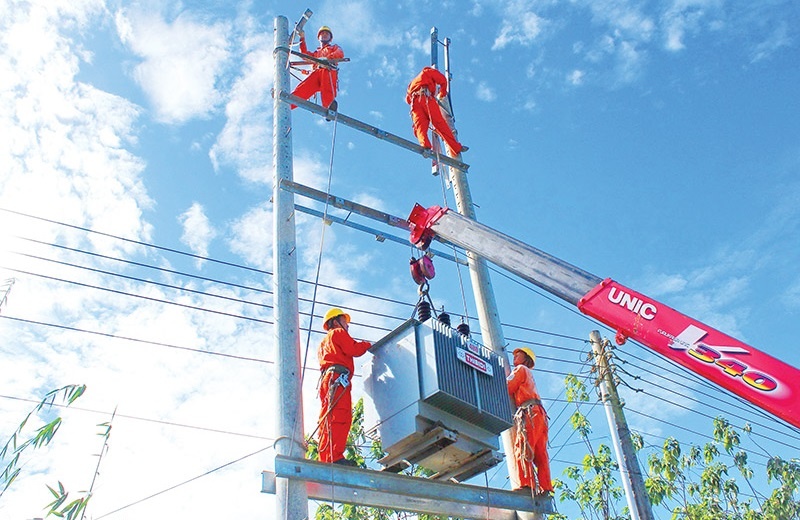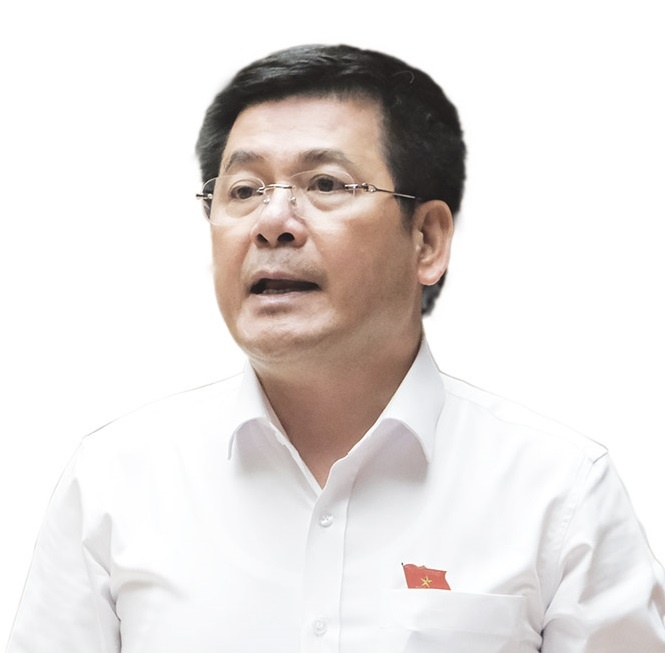Nuclear option weighed up for energy ambitions
In a report to the government nearly two weeks ago, the National Assembly Economic Committee (NAEC) suggested that it “temporarily keep the planning for locations that were earmarked for construction of Ninh Thuan 1 and 2 power plants” until the National Assembly (NA) provides an official decision on the issue.
According to the committee, not resurrecting the Ninh Thuan power plants could affect the country’s ability to develop nuclear power in the future. The plants were approved for cancellation in 2016.
One of the reasons behind the recommendation of nuclear power development is that this type of energy will help the country have an additional source of electricity, especially in the current context that Vietnam is forecast to suffer from grave shortages of power over the next decade.
Meanwhile, the government has also vowed to reduce geenhouse gas emissions so that by 2050, Vietnam can achieve net-zero emissions.
According to the International Energy Agency, nuclear power is the second-largest source of low-carbon electricity today, with 452 operating reactors worldwide providing 2,700 terawatt-hours of electricity in 2018, or 10 per cent of global electricity supply. In advanced economies, nuclear has long been the largest source of low-carbon electricity, providing 18 per cent of the supply in 2018. Over the past 50 years, the use of nuclear power has reduced carbon emissions by over 60 gigatonnes – nearly two years’ worth of global energy-related emissions.
At an energy development forum held in Hanoi in April, Tran Tri Thanh, director of the Vietnam Atomic Energy Institute, said it is necessary to resume the plan on nuclear power development soon as this type of energy is clean and Vietnam had earlier planned to develop it in the south-central province of Ninh Thuan, with a remarkable capital investment already spent.
According to the NAEC, before Ninh Thuan nuclear development was stalled, seven related projects worth over VND2.3 trillion ($100 million) had been funded by Electricity of Vietnam (EVN) and the provincial People’s Committee. Nearly 450 students had also received training on nuclear power development from Russian experts.
Ha Sy Dong, member of the National Assembly Budgetary and Finance Committee, also said it is necessary to develop nuclear power.
“Vietnam is witnessing a strong rise in electricity demand and socioeconomic development, with the country’s major capacity for a learning experience from other nations in developing this type of energy. However, I think nuclear power should be developed after 2040, and safety must be preceded,” said Dong. “It is difficult now to talk about the capacity of the nuclear power plants as more calculations will be needed, and the existing socioeconomic development conditions are far different from those in 2016.”
 |
| Nuclear option weighed up for energy ambitions |
Postponed plan
In November 2016, the NA adopted a resolution on cancelling the construction of the Ninh Thuan nuclear power project, whose prefeasibility reports were already completed.
This project’s investment was adopted by the NA in 2009. Both plants were to be located in Thuan Nam district on an area of over 443 hectares on land and 440.6ha in the sea. Each plant would have two turbines with a total combined capacity of 2,000MW. While Ninh Thuan 1 was set to be built by Atomstroyexport, a subsidiary of Russia’s State Atomic Energy Corporation, Ninh Thuan 2 was aimed to be constructed by International Nuclear Energy Development of Japan Company – a consortium of 13 Japanese companies. These two plants were set to be owned and operated by EVN.
According to Vietnam’s government, the reason for the cancellation is that given its limited budget, Vietnam needs to focus its money on building key infrastructure projects of national importance, such as Long Thanh International Airport, the north-south railway and road, and the national coastal road, which will cost tens of billions of US dollars to build.
“The nuclear technologies of Russia and Japan expected to be used for this project are the most modern now, with a very high level of safety. The cancellation was not due to technology-related reasons, but due to our country’s limited economic conditions,” said Mai Tien Dung, former Minister and Chairman of the Government Office, at a conference in November 2016. “The cancellation has been thoroughly considered, with high responsibility, by the Central Party Committee, the NA, and the government, for the country’s sustainable development.”
At that time, Vietnam’s total installed capacity from wind and solar power was over 6,000MW. As of late 2021, the figure was 20,760MW, accounting for 27 per cent of the country’s total installed capacity. Total electricity produced from renewable energy projects was 31.5 trillion kWh, or 12.27 per cent of the nation’s total electricity output.
If a U-turn was made and the plants were established, the first turbine could officially begin operations by 2028, and all the other three turbines would follow suit by 2030. By that time, the project would contribute only 3.6 per cent of total capacity and 5.7 per cent of the total electricity output of Vietnam.
Expectations
The Vietnam-Japan agreement on developing the Ninh Thuan 2 plant remains valid. “At meetings, talks, and contacts at all levels, the Japanese side still proposes that if Vietnam resumes its nuclear energy programme, the country considers Japan a prioritised partner,” said the NAEC.
In July 2021, the Vietnam Energy Science Council, an advisory group under the Ministry of Industry and Trade, proposed that the NA and Prime Minister Pham Minh Chinh decide on including nuclear power in the new Electricity Master Plan.
“It is necessary to develop nuclear power as a clean, large-capacity, and stable source of electricity to replace thermal power,” the council said in its proposal.
Vietnam’s electricity demand is expected to increase by over 10 per cent a year in the future. The rate was 9.6 per cent during 2011-2020. The NAEC noted that developing this type of energy would need thorough assessment and analysis with accurate and scientific evidence, as well as thorough forecasts on the country’s demands for energy in the future.
“For the plan to be resumed, it must be approved by the Party, and the government should then consider restarting the Ninh Thuan nuclear power project at an appropriate time,” the NAEC suggested. “Nuclear power will importantly contribute to mitigating climate change. Development of this type of energy is an important solution to ensure national energy security. Thus, nuclear power needs to be considered in Vietnam’s energy development strategy in the next development of the country.”
The delay in construction, however, disappointed Russia’s Rosatom State Atomic Energy Corporation, the builder of Ninh Thuan 1. During 2011-2016, Rosatom spent millions of US dollars on surveys and studies, field trips and workshops, and establishing a large team in Vietnam.
“The decision to build the plant or not depends on the NA. But we want to continue this project and are awaiting the final decision from the legislature,” Andrey Stankevich, representative of Rosatom in Vietnam, told VIR at the time.
| Nguyen Hong Dien - Minister of Industry and Trade
All of us know that authorised bodies advocated and the NA adopted a resolution on halting the construction of the Ninh Thuan nuclear power project. This means the project has been halted, not abolished, and in principle, there is no reason now to remove the planning for the location for the project. On the other hand, this location has been thoroughly studied by our partners and relevant agencies, who affirmed that Ninh Thuan is the best location for the project. I also would like to say that the world is now coming back to nuclear power development. At COP26, many nations have committed to developing clean energy including wind and solar power. However, in order to effectively exploit this type of renewable energy, there must be quite a stable source of power acting as a foundation, which is coal-fired power or hydropower. But coal-fired power has no good conditions for development now, while hydropower also has no more room for development. Thus in the future, when we implement our commitments made at COP26, we will have to strongly develop renewable energy. Nevertheless, to this end, we also need to have electricity as a stable foundation which may be nuclear. A few years ago, the US and Germany decided to reduce nuclear power. However, they are now formulating plans to further develop this type of energy as a foundation for developing renewable energy. Thus, we propose to the government and the NA that while we already have Ninh Thuan as a good location for the nuclear power project, we should not consider removing this plan now and should wait until the competent body makes the final official decision on the project. |
What the stars mean:
★ Poor ★ ★ Promising ★★★ Good ★★★★ Very good ★★★★★ Exceptional
Related Contents
Latest News
More News
- Driving double-digit growth through green and circular transformation in Vietnam (December 17, 2025 | 09:00)
- Standard Chartered and ACCA deepen collaboration to develop Vietnam’s talent for a sustainable future (December 15, 2025 | 18:18)
- Schaeffler reports strong early output from Dong Nai solar project (December 12, 2025 | 15:16)
- Forestry conference highlights biodiversity and sustainability goals (December 09, 2025 | 13:35)
- Home Credit honoured among top 10 sustainable companies in trade and services (December 09, 2025 | 12:18)
- SCG and seven member companies honoured in Top 100 Sustainable Businesses 2025 (December 08, 2025 | 09:00)
- Nestlé Vietnam pioneers sustainable development and promotes business connections (December 06, 2025 | 12:09)
- CSI 2025 highlights rise of Vietnam’s green champions (December 06, 2025 | 09:00)
- Acecook Vietnam named among top 100 sustainable businesses (December 06, 2025 | 08:00)
- Vietnam’s forest carbon credits draw global interest (December 05, 2025 | 17:41)


 Tag:
Tag:






















 Mobile Version
Mobile Version